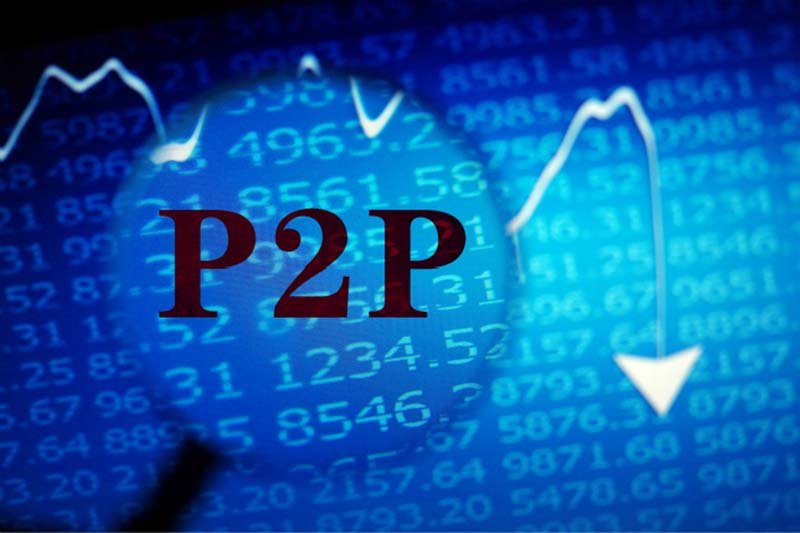10 Passive Alternative Investments To Diversify Your Portfolio
Traditional investment assets like stocks and bonds have been the most popular options to earn passive income.
However, alternative investments have gotten increasingly popular among investors in the past two decades. These passive alternative investments have proven to generate sustainable long-term yields as well.
To see which ones will ensure good capital gain, check out the 10 best alternative investments, factors to consider before adding them to your portfolio, and the easiest way to start your alternative investment journey.
Further reading
- Check out the 10 Best Alternative Investment Platforms to Try in 2022.
- Discover the main difference between Investing in Wine and Investing in Traditional Stocks.
10 Best Passive Alternative Investments in 2023
Here are ten great alternative investment assets you can add to your portfolio:
1. Aged Drinks like Wine

Investing in age-worthy drinks like fine wine is a great way to diversify your portfolio. Wine offers low market volatility, and it’s a great way to manage portfolio risk.
If you’re a non-accredited or an accredited investor looking for an easy way to get started in the wine investment world, check out Vinovest.
Vinovest is a leading wine investment company that can help you buy, store, and sell wine from around the world with just a few clicks. And the best part is that you get investment advice and wine portfolio management assistance at every step of the way.
Vinovest also comes with lots of benefits like:
- Optimal storage conditions in bonded warehouses
- Best wine prices since all bottles are sourced directly from the wineries and wholesalers
- Provenance check of all bottles in your wine collection
- Full wine insurance policy
- Low overall costs since Vinovest charges you only 2.5% (or 1.9% for a portfolio above $50,000)
- Access to limited releases of new wines and private winery sales
Alternatively, you can explore other investment-worthy drinks like whiskey, which have similar benefits to the wine asset class.
2. Real Estate

Real estate is a preferred alternative asset for many investors. It offers low volatility and a stable passive income stream even when the traditional stock market is down.
There are three main real estate investing methods:
- Rental properties: You can acquire property for a 20% down payment and offer it as a rental. This is a great way to secure a regular passive money flow, and the best part is you don’t need to do much besides some minor maintenance repairs from time to time.
- REITs: If you don’t want to deal with maintaining a rental property, you can consider investing in a real estate investment trust (REIT.) Investors are paid 90% of the REITs' taxable income as dividends. However, keep in mind that the IRS considers this real estate investment dividend a traditional taxable income. So, if you’re receiving a substantial amount from REITs, your expenses might increase substantially.
- Crowdfunding: With this real estate investing method, you can choose whether you want to invest in debt or equity of both commercial and residential real estate properties. This way, you get the tax advantage of owning the property and avoid the responsibilities of this ownership. However, remember that you need to be an accredited investor with a long-term commitment to get admission to most crowdfunding platforms.
3. Dividend Stocks

Dividends are one of the most common passive alternative investments.
Investors buy company stocks, and then they are paid regularly (quarterly or annually) a portion of the company’s profits. Once paid, you choose whether you would keep the cash or reinvest it into the company.
However, keep in mind that your earnings depend on the company's profitability. If you’re unsure which company to invest in, you can choose those with a dividend aristocrat label (signifying companies that have paid increasing dividends for at least 25 years.)
4. Peer-to-Peer Lending

Peer-to-peer (P2P) lending is a comparatively new alternative investment opportunity. However, it is rapidly growing in popularity due to its low entry requirements and development of different P2P online platforms.
P2P lending platforms connect lenders and borrowers, so you can directly lend money to a business entity or a person.
Once you lend money, all you have to do is wait until you collect it back. You can expect a return on investment of around 5-12%. However, this higher ROI also comes with higher credit risk.
Both accredited and non-accredited investors can invest through P2P lending, and the initial investment on many of the platforms is quite low (as little as $25.)
5. Fixed Bonds

Governments and financial institutions usually issue bonds to raise funds. So, if you invest in a fixed income bond, you are considered a creditor rather than a shareowner.
Bonds are a safe way to earn passive income since they come with a fixed interest rate paid at maturity (usually annually or semi-annually.) Additionally, while interest rates have been going down in the past few decades, bonds have been paying increasing interest rates.
Before investing, do your research to understand which fixed income bonds best fit your investment portfolio.
6. Index Funds

An index fund (a type of mutual fund) is a portfolio of stocks or bonds that mimic the performance of a specific financial market index. The idea is that by mirroring a segment of the market (or the stock market as a whole), the index fund portfolio will match its performance.
This passive alternative investment opportunity provides low cost, minimum risk, and stable returns. It is a good addition to your portfolio if you have a retirement account (IRAs or 401K.)
7. Precious Metals

Investing in precious metals like gold and silver can be a good addition to your portfolio since they can reduce volatility and risk. This passive income investment has intrinsic value and high liquidity levels. Additionally, at times of economic uncertainty, the price of precious metals tends to increase while stock market prices decrease.
You can either directly buy the precious metals (but in this case, you’ll need to pay for their storage) or invest in ETFs exposed to this industry.
8. Hedge Funds

A hedge fund is a passive investment limited to only accredited investors who have annual income above $200,000 or a net worth of at least $1 million.
A hedge fund manager uses various investment strategies to achieve above-average investment returns. However, hedge funds require a high minimum investment and fall into the high-risk alternative asset class.
9. Mutual Funds

A mutual fund manager pools investors’ money and invests it in stocks and bonds. This gives you access to a diversified portfolio at a low price. You can also choose from a wide range of mutual fund types and select the one that best reflects your investment objective.
However, keep in mind that mutual funds that invest mostly in stocks tend to be riskier than bond-focused funds.
Some of the most common types include:
- Private equity funds: A private equity fund (venture capital and growth equity) invests in private companies or buys out public companies.
- Money market funds: This type of fund invests in low-risk Government Treasury bills with low return on investment.
- Global funds: These funds invest money across the world. However, the investments tend to be more volatile and susceptible to country-specific risks.
- Income funds: This type of fund invests in Government and corporate debt, which provides stable cash flow to investors.
- Real estate funds: Such funds usually invest in real estate stocks and REITs.
10. Collectibles like Art

A passive investor can sell collectibles such as paintings, comics, cars, stamps, coins, and other valuable objects at a price higher than the original one. For example, Stan Lee’s First Edition of The Amazing Spiderman sold only for $0.12 in 1962, but in 2011, it was purchased for $1.1 million.
However, most collectibles are considered illiquid investments since the demand is not very high, and they’re subject to the buyer’s taste and perception. This also makes their value unstable - what is perceived as a coveted collectible item today could lose its value overnight and vice versa.
Factors to Consider When Choosing Passive Alternative Investments
Here are a few factors to consider before starting your alternative investing journey:
1. Research on Passive Alternative Investment Assets

New alternative investment classes are emerging each year. To take advantage of them, you need to keep track of all current news and trends in the investment world. But this is a time-consuming task that requires a lot of research on your side.
Alternatively, you can use the services of an advanced investment platform like Vinovest. This way, you leave all the investment strategy planning and research into the hands of the professionals while you can sit back, relax, and enjoy the capital gains.
2. Technology Advancements & Globalization

Technological advancements and globalization have made investing easier than ever before.
What once was a tedious and time-consuming in-person process can now be done with a few mouse clicks or on your phone. Additionally, now you’re not limited only to the services in your geographic area. You can reach out to the best professionals no matter where they’re located.
You should pick apps like Vinovest, Yieldstreet, and Masterworks that offer various services for all types of investors, portfolios, and budgets. This will simplify the investment process and makes it easily accessible for you.
3. Environmental, Social, and Governance Influence

The alternative investment industry is affected by the major environmental, social, and governance (ESG) trends.
For example, the climate change crisis has pushed the sector to offer alternative investment funds that diversify into sustainable energy, eco-friendly, and other “green” companies.
So, seek out passive alternative investment companies that take the initiative to track different ESG factors (human rights, employee diversity) of the companies they invest in.
How to Start Investing in Alternative Assets

There are a few things to consider before starting your passive investing journey.
First, you need to select what alternative investments you want to add to your portfolio based on your:
- Budget: Consider how much of your personal capital you’re ready to invest.
- Risk appetite: Evaluate whether you prefer investing in high- or low-risk assets.
- Taxation: Do additional research on the asset class of your choice and check whether it’s taxed as a regular income or as a capital gain and other key characteristics
- Accreditation: Understand whether you can invest as an individual investor or you need to be an institutional investor to invest in the alternative asset class of your preference.
Next, consider what’s the most convenient way for you to invest:
- Investment software or an app: For example, if you want to invest in fine wine, an app like Vinovest can make the whole process quick and easy without you having to spend extra time on research and asset allocation.
- Personal portfolio manager (PPM): Alternatively, if you prefer a more personal approach and have the budget for it, you can hire a personal portfolio manager who can give you investment advice and help you create your investment strategy.
Is Passive Investment Safe?

Passive investing provides a reliable extra income stream and has lower risk and volatility than conventional investments. However, remember that this is not a “get-rich-fast” scheme, and usually, it requires a long-term commitment.
Also, thoroughly research the alternative asset management services you’re considering before you make a choice. Stay away from companies that promise easy money or other “too-good-to-be-true” objectives.
Start Your Alternative Investment Portfolio Today

The alternative investment industry is more exciting than ever before. The constantly evolving environment, new alternative assets, and advanced technology allow for easy investment.
If you’re an investor looking to diversify your portfolio, passive income investments can be a great way to earn stable long-term profits.
Based on your investment objective and preferences, you can start investing in private equity, real estate, and even fine wine.
If you’re looking for a way to build a successful fine wine portfolio, sign up on Vinovest and obtain some of the most precious wine bottles today!



